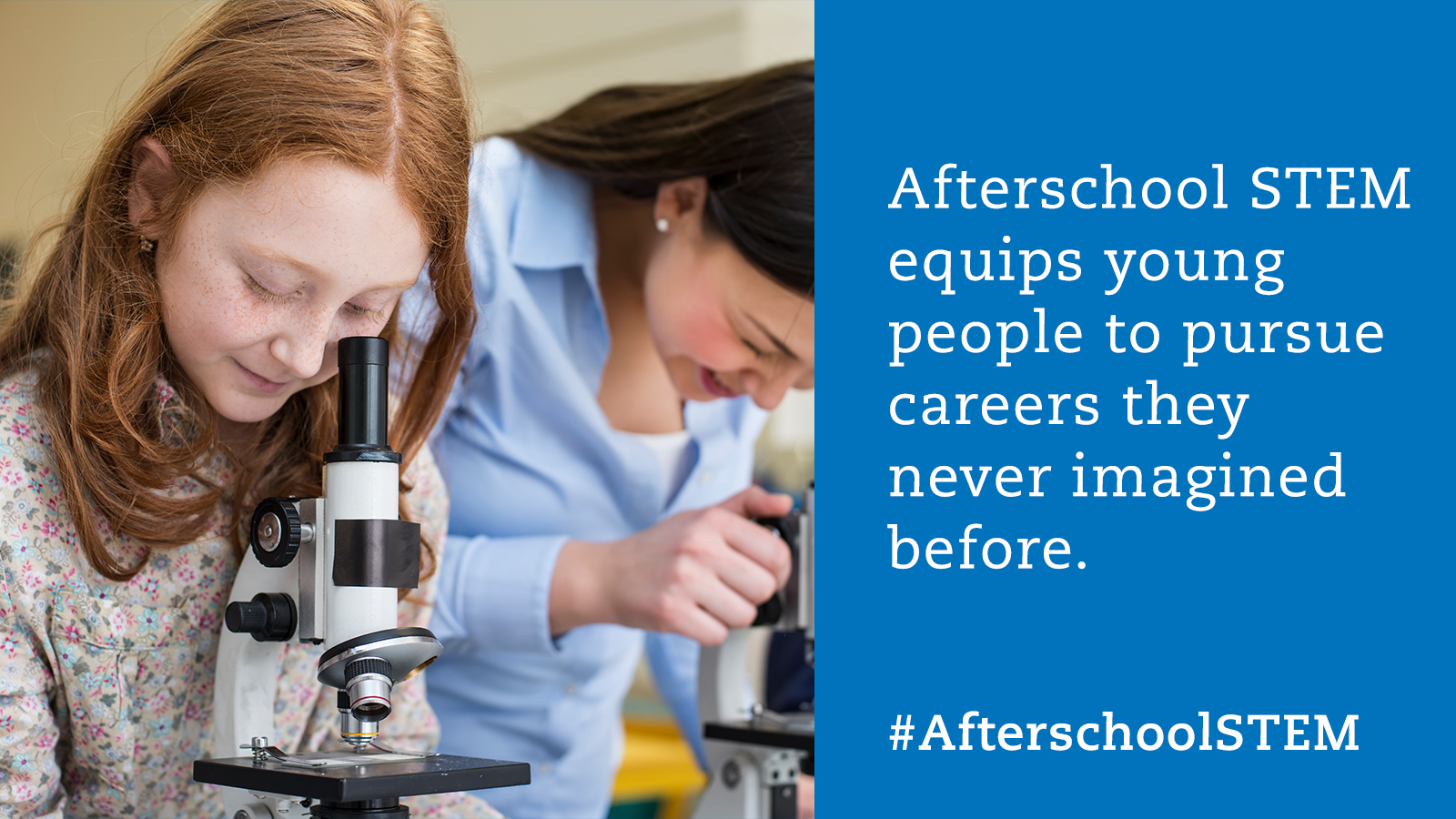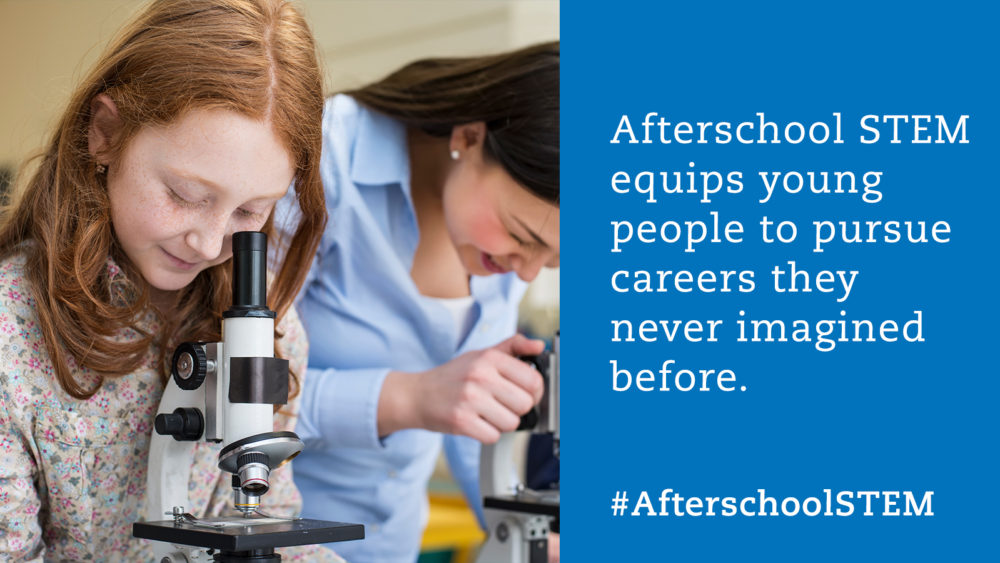 |
Afterschool STEM programming shone brightly under the spotlight this week with the release of a research study on outcomes and a compendium of articles presenting research and examples of effective afterschool STEM programming.
STEM Next at the University of San Diego (carrying on the work of the Noyce Foundation) and the Mott Foundation partnered to host an event at the National Press Club on March 1 celebrating afterschool STEM programming and its role in preparing young people for the workforce. Dr. Sylvester James Gates Jr., an extremely distinguished scientist and professor at the University of Maryland gave the keynote address. Dr. Gates was also on President Obama’s Presidential Council of Advisors on Science and Technology, where he played a key role in advocating for STEM education. It was in this latter capacity that Dr. Gates discussed his belief in the value of informal and afterschool STEM learning, recognizing that drawing young people into STEM fields is often more of an emotional issue than an intellectual one.
This last point is a special strength of afterschool programs, evident in the findings from an 11-state study conducted by Dr. Gil Noam and his team at Harvard’s PEAR Institute and Dr. Todd Little and his team at Texas Tech University’s Institute for Measurement, Methodology, Analysis, and Policy (IMMAP). They gathered and analyzed outcomes reported by 1600 students and nearly 150 facilitators in 160 afterschool programs. The data show that afterschool STEM programs substantially increase young people’s interest in STEM fields and STEM careers and can also help students to think of themselves as capable of doing science. You can read more about these findings.
A lively panel discussion followed this presentation. Moderated by Brian Kelly, editor and chief content officer at U.S. News & World Report, the conversation included Bronwyn Bevan, Senior Researcher at the University of Washington, Jay Flores, an engineer with Rockwell Automation, Judy Vredenburgh, President and CEO of Girls Inc., and Rose Wilder, superintendent of Clarendon School District One in South Carolina. The panelists discussed the critical role of afterschool programs in leveling the playing field for access to STEM education and enrichment opportunities.
Finally, Ron Ottinger, the Director of STEM Next and the former Executive Director of the Noyce Foundation, which oversaw much of the investment in afterschool STEM over the past decade, launched a compendium, STEM Ready America, featuring articles on afterschool STEM from 40 authors. The articles are grouped into three main themes: Evidence for STEM (in afterschool); Partnerships for STEM Learning; and Ensuring Access to Quality STEM. I co-authored one of the papers with Bronwyn, “From Evidence to Policy: The Case for Afterschool.” In this paper, we present the research literature that has long documented the importance of out-of-school settings for engaging young people in STEM and the characteristics of productive programs that yield the best youth outcomes. We follow this discussion with a set of policy recommendations: increase funding to make more high-quality afterschool programs available for those who need it create mechanisms for increased collaboration between in-school and out-of-school educators; and invest in an afterschool STEM research agenda that will help document and understand how STEM learning occurs across time and setting and under what conditions. There are many compelling papers in this compendium that lay out strategies for increasing access to high-quality afterschool STEM programs.
The research findings combined with the papers in STEM Ready America help to make the clearest case yet for the importance of afterschool STEM programs as vital tools to help all young people prepare for their future. Keep an eye on STEM Ready America for more research and articles in the coming months!

Comments are closed.